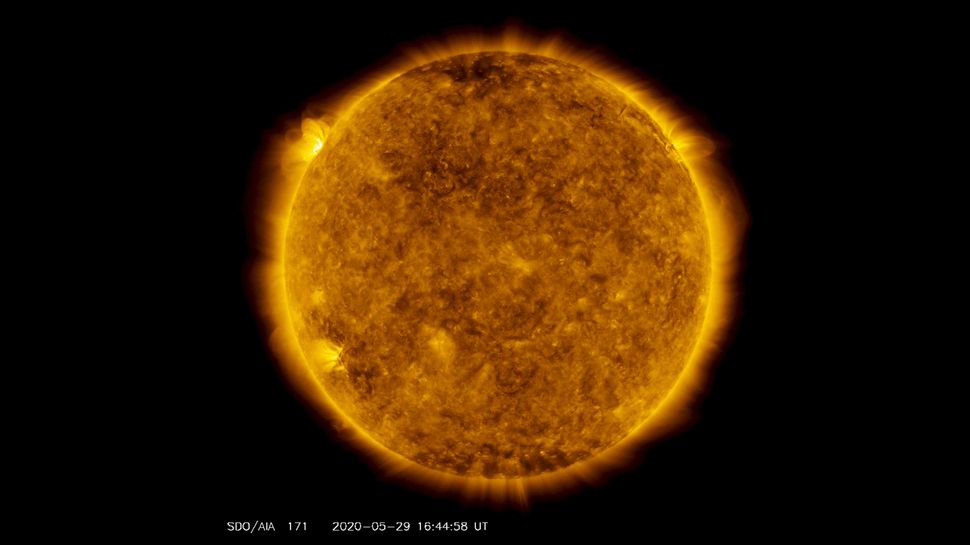On Friday morning (May 29), our star fired off its strongest flare since October 2017, an eruption spotted by NASA's sun-watching Solar Dynamics Observatory (SDO).
Solar flares are bursts of radiation that originate from sunspots, temporary dark and relatively cool patches on the solar surface that boast very strong magnetic fields.
Scientists classify strong flares into three categories: C, M and X. Each class is 10 times more powerful than the one beneath it; M flares are 10 times stronger than C flares, but 10 times weaker than X-class events.
Today's flare was an M-class eruption, so it was no monster. (And it wasn't aimed at Earth, so there's no chance of supercharged auroras from a potential associated coronal mass ejection of solar plasma.)
Continued...
Source
Solar flares are bursts of radiation that originate from sunspots, temporary dark and relatively cool patches on the solar surface that boast very strong magnetic fields.
Scientists classify strong flares into three categories: C, M and X. Each class is 10 times more powerful than the one beneath it; M flares are 10 times stronger than C flares, but 10 times weaker than X-class events.
Today's flare was an M-class eruption, so it was no monster. (And it wasn't aimed at Earth, so there's no chance of supercharged auroras from a potential associated coronal mass ejection of solar plasma.)
Continued...
Source






















